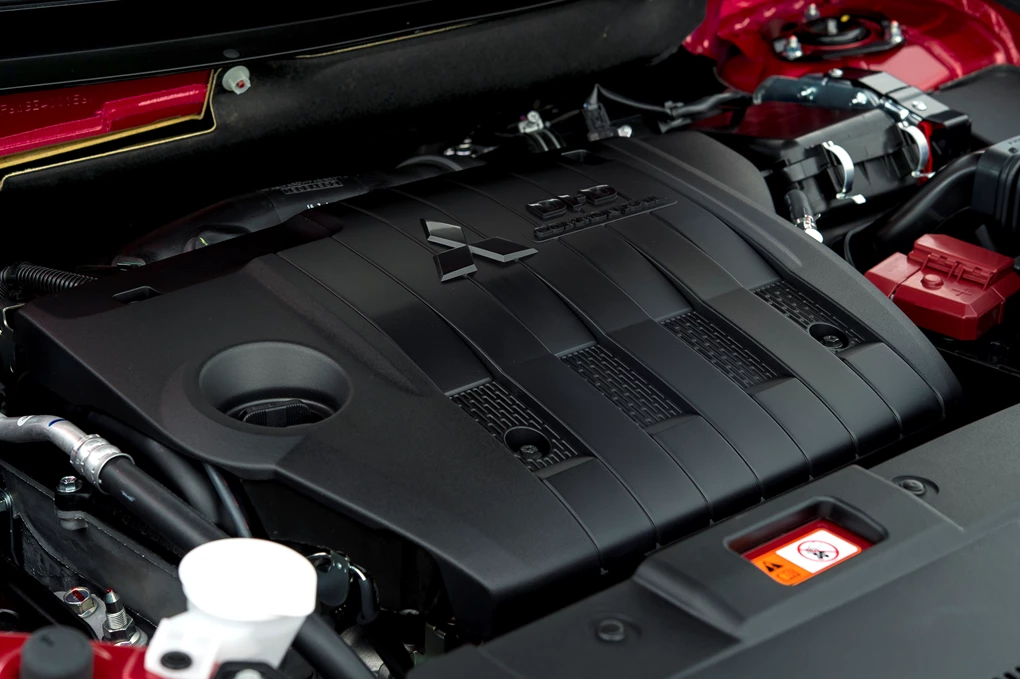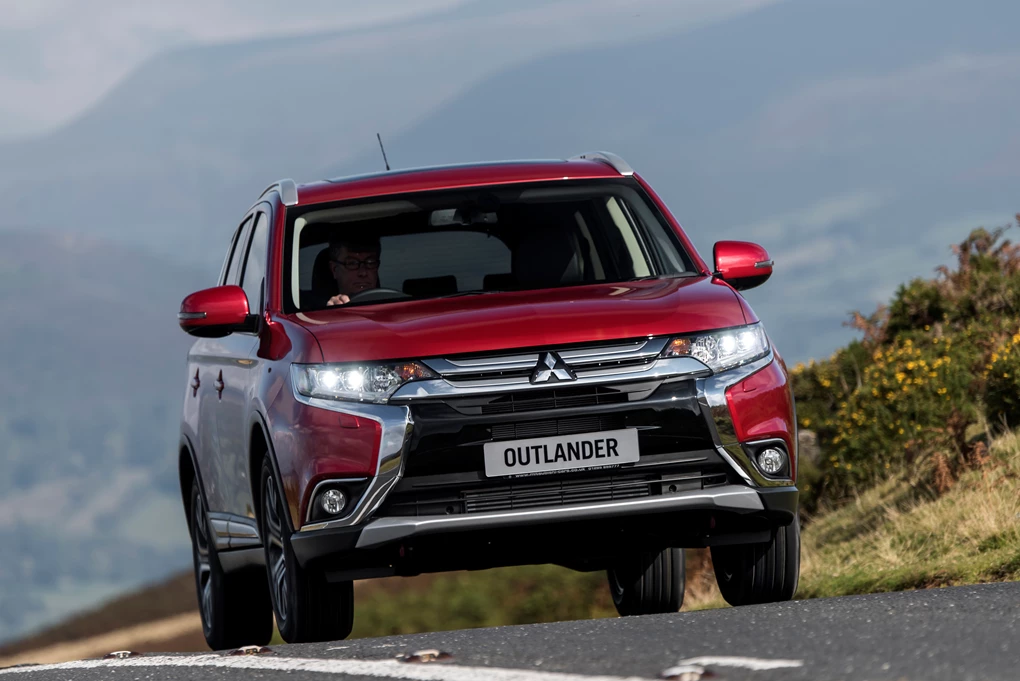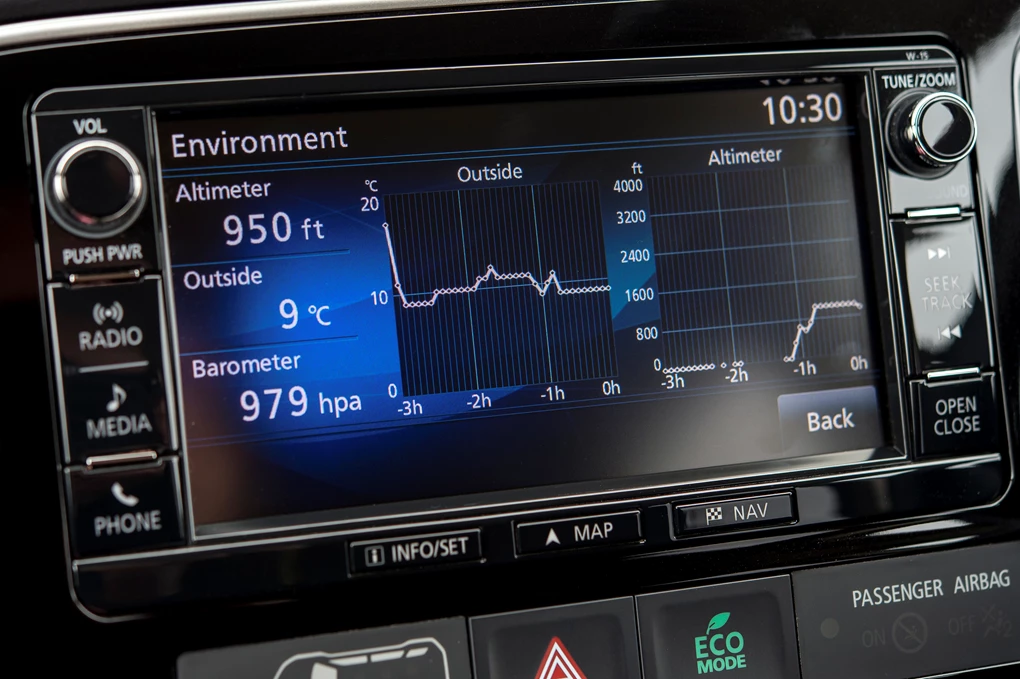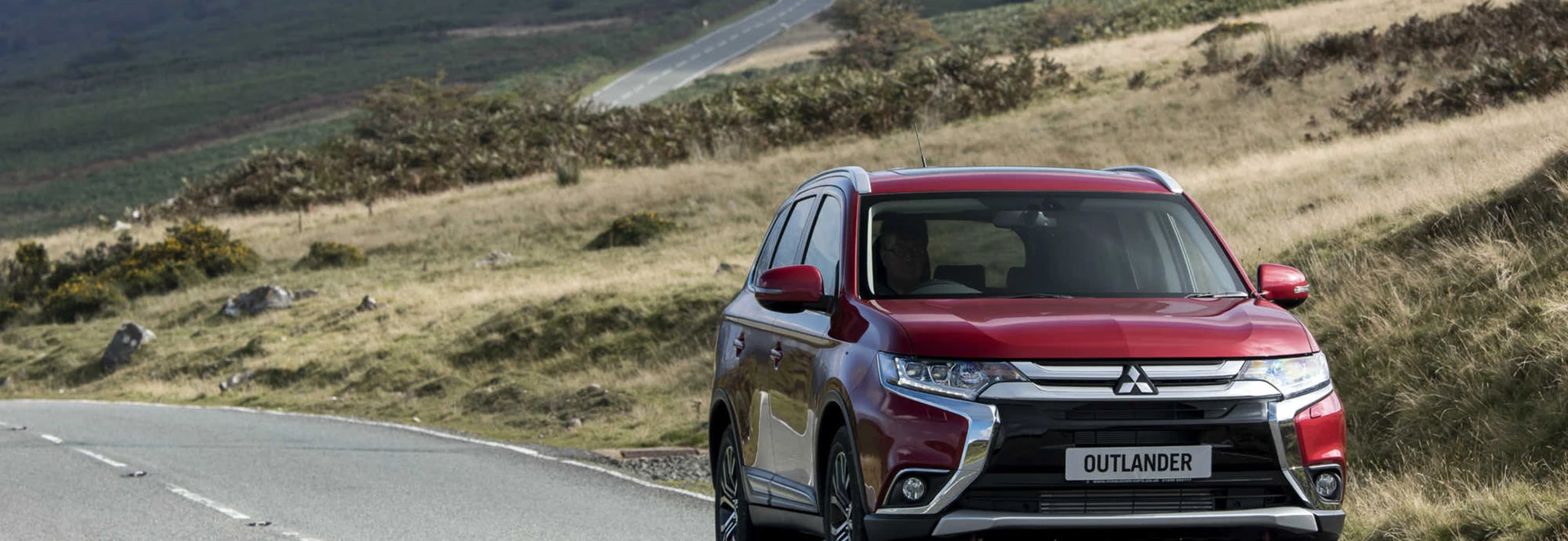As of late, you can’t hear the name ‘Mitsubishi Outlander’ without its Plug-in Hybrid (PHEV) derivative creeping into the conversion. And it’s no wonder, the PHEV has been hugely successful since it went on sale last year, overtaking the Nissan LEAF when it comes to sales.
But what of the standard, diesel-run Outlander? Well, opt out of the petrol/electric-powered model and you get the Outlander diesel, aimed at those who want a motorway cruiser or more of a pure, rugged off-roader.
To keep the Outlander fresh, Mitsubishi has updated both its diesel and PHEV models, with the most noticeable change being a redesigned front-end. There have also been a host of updates to the kit levels and some other smaller but useful changes, like a reduced start-up time for the infotainment system and a higher opening boot lid.

Performance
If you were to drive blindfolded, you would never think that the PHEV and the diesel Outlander came from the same family. However, that is not to say either of the models are inferior – they both have their own merits.
The diesel model feels like a grizzly off-roader, with a 2.2-litre engine under the bonnet producing 148bhp and a throaty engine note. Combine this with its short-gearing and plentiful torque and the Outlander definitely feels like it has a chunk of the L200’s DNA. The shift of the gearbox feels similar to the L200 as well, offering accurate changes and a rather chunky gearstick.
Reaching 62mph from a standing start in 10.2 seconds, the diesel is hardly what you would call nippy, but power is sufficient when it comes to overtaking.

Ride and Handling
Although feedback is decent, the Outlander doesn’t feel at home on twisty roads.
Mitsubishi has tweaked the suspension set-up slightly in the new Outlander, making it stiffer in order to reduce body roll. From what we could tell, there wasn’t much difference, which means it still leans a fair bit in the corners – due to it being so large. On the whole, however, the suspension is very comfortable, although it can feel ever so slightly unsettled over consistently bumpy roads. Also on the comfort front, Mitsubishi has focused on improving cabin insulation, with things like thicker glass contributing. Although the improvements can be detected, there is still a fair bit of road noise. The power steering has also been reconfigured, now offering a tad more feedback, which is more noticeable in the diesel than in the PHEV. Although feedback is decent, the Outlander doesn’t feel at home on twisty roads.

Interior and Equipment
Mitsubishi calls its new front-end design its ‘Dynamic shield’ concept.
Unlike the PHEV model, the diesel Outlander offers seven-seats – although entry-level models are five-seaters. Storage space is very flexible, with 591 litres on offer with five seats in place, expanding to 1,022 with all seats behind the front row folded. This means it trumps the likes of the Honda CR-V. Space for rear passengers is impressive as well, with plenty of leg room and head room, due to its rather boxy shape. All models have had some tweaking in terms of equipment. Entry-level GX2 models now benefit from dual-zone climate control, a sunglasses pocket and LED daytime running lights. New features for the GX3 trim include all of the above plus a push button start ignition. New additions to the flagship GX4 trim include LED headlamps with an auto-levelling feature. The interior of the Outlander feels slightly less refined than some of its competition and at times it can be difficult to tell what is leather trimming and what is plastic.
Cost
Comparing similar spec models like the GX4 and HSE from the Outlander diesel and Discovery Sport diesel respectively, the Outlander is £6,300 better off.
Mitsubishi labels the new Outlander as a “genuine alternative to the Land Rover Discovery Sport” – stating that its price tag is 15 per cent cheaper. For example, comparing similar spec models like the GX4 and HSE from the Outlander diesel and Discovery Sport diesel respectively, the Outlander is £6,300 better off. Standard kit on the two models is also impressive, although it lacks the classy finish of the Discovery Sport, which is where the 15 per cent saving starts to show. In terms of fuel economy and efficiency, the Outlander trumps a lot of its competition, with the Honda CR-V the only rival that can beat its 53.3mpg figure. The Discovery Sport matches its CO2 figure of 139g/km, but again, the CR-V comes out on top with 133g/km.
Our Verdict
To some, the diesel will make a lot more sense than the PHEV, especially if it comes down to motorway slogging or mud-plugging. If you have your heart set on the Outlander then you should definitely try out the PHEV. If you do, we think you will want to stick with it as the pleasurable refinement of the electric power and the massive potential savings are hard to ignore. If a tough off-roader is what you are after, then the diesel is more appropriate, but some competitors do offer more in terms of performance and ability.




